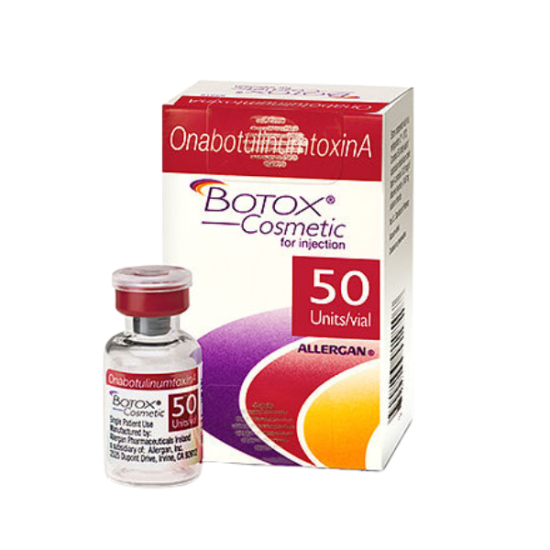Botox 50 Units Dilution: A Step-by-Step Guide for Safe and Effective Use
Botox (botulinum toxin type A) is a widely used neuromodulator in both cosmetic and medical fields. Whether it’s to reduce wrinkles, manage migraines, or treat muscle disorders, proper preparation of Botox is essential for patient safety and optimal results. One of the most common vial sizes used is 50 units, and knowing how to dilute it correctly is crucial.
This blog offers a complete, easy-to-follow guide on how to dilute a Botox 50 Units, including reconstitution methods, dilution ratios, safety practices, and storage recommendations.
Understanding Botox and Its Use
Botox works by blocking nerve signals to specific muscles, causing temporary muscle relaxation. It’s used in aesthetic treatments (like smoothing frown lines or crow’s feet) and therapeutic interventions (like treating cervical dystonia, chronic migraines, or spasticity). For these procedures to be effective and safe, the Botox must be properly diluted using 0.9% preservative-free saline before administration.
Why Dilution Matters
Diluting Botox correctly affects several key aspects of treatment:
- Accuracy of dose per injection point
- Spread of the toxin in tissue
- Effectiveness and consistency of results
- Minimization of side effects
Using incorrect volumes or techniques may reduce treatment efficacy or increase the risk of complications such as ptosis (droopy eyelids) or unwanted muscle weakness.
Materials You’ll Need
To dilute a 50-unit vial of Botox, you’ll need:
- 1 vial of Botox 50 Units
- 0.9% preservative-free sodium chloride (saline)
- 1 mL or 3 mL sterile syringe with needle
- Alcohol wipes
- Clean gloves
- Labeling pen
Dilution Ratios Explained
The amount of saline you add determines the concentration per unit volume. Here are common dilution examples for a 50-unit vial:
| Saline Added | Concentration | Dose per 0.1 mL |
|---|---|---|
| 0.5 mL | 100 units/mL | 10 units |
| 1.0 mL | 50 units/mL | 5 units |
| 2.0 mL | 25 units/mL | 2.5 units |
| 2.5 mL | 20 units/mL | 2 units |
| 5.0 mL | 10 units/mL | 1 unit |
Note: Choose your dilution based on treatment goals. Lower dilution (higher concentration) gives more precision. Higher dilution spreads over a wider area.
Step-by-Step Reconstitution Guide
- Sanitize Your Work Area
Clean the surface and wear sterile gloves to maintain aseptic technique. - Inspect the Vial
Ensure the Botox vial is sealed, unexpired, and that the white powder inside is intact and not discolored. - Draw the Saline
Using a sterile syringe, draw up the desired volume of 0.9% preservative-free saline (e.g., 1.0 mL). - Reconstitute the Botox
- Remove the plastic cap from the vial.
- Clean the rubber stopper with an alcohol wipe.
- Slowly inject the saline into the vial. Aim the needle at the glass wall (not directly onto the powder) to minimize foaming.
- Let the vial sit for a few seconds.
- Gently Mix the Solution
Swirl the vial gently to dissolve the powder. Do not shake—this can denature the protein and reduce effectiveness. - Inspect the Final Solution
Make sure the solution is clear, colorless, and free of particles. If it appears cloudy or contains floating debris, discard it. - Label the Vial
Write the dilution ratio, date, and time of reconstitution on the vial to ensure proper usage tracking.
Storage Guidelines
- Reconstituted Botox should be stored at 2–8°C (36–46°F).
- Use the solution within 24 hours for best results.
- Discard any unused product after 24 hours.
Clinical Tips for Use
- Always use an insulin syringe or a syringe with fine graduation for accurate dosing.
- For cosmetic procedures, lower dilution volumes (0.5 mL to 1.0 mL) are often preferred for precise targeting.
- For broader therapeutic treatments, higher volumes (2.0 mL or more) may be used to allow for wider diffusion.
- Rotate injection sites and avoid injecting too close to muscles not intended for paralysis.
- Monitor for adverse effects and educate patients on what to expect post-treatment.
Common Mistakes to Avoid
- Shaking the vial: Can reduce Botox effectiveness. Always swirl gently.
- Using preserved saline: Only preservative-free saline is FDA-approved for Botox reconstitution.
- Reusing diluted Botox past 24 hours: Even if refrigerated, it may lose potency.
- Incorrect labeling: Can lead to dosing errors. Always document clearly.
Conclusion
Proper dilution of a 50-unit Botox vial is a fundamental step in delivering safe and effective cosmetic or medical treatments. By using the right saline, measuring carefully, and handling the vial gently, you can maintain the integrity of the Botox and ensure optimal outcomes for your patients.
Always adhere to clinical guidelines, manufacturer instructions, and maintain a sterile environment. With practice and precision, you can confidently reconstitute Botox 50 Units and deliver outstanding results.

